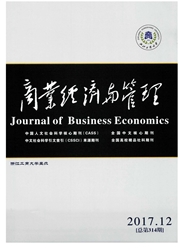

 中文摘要:
中文摘要:
本文以新古典模型作为研究基准,从资本积累的视角对中国刘易斯拐点问题进行了实证研究,避免了当前研究思路与刘易斯模型不一致的问题,也避免了以部门分类特征搜集数据的困难,突破了以劳动力市场作为研究重心的研究思路。实证研究结果表明,我国的资本积累速度与人均资本量并不存在新古典体系所预言的负向关系,而是显著的正向关系,表明我国资本收益率还未进入到明显的下降趋势中,意味着刘易斯模型含义下的刘易斯拐点并未真正到来。
 英文摘要:
英文摘要:
With the neoclassical model as the research benchmark, this paper has conducted an empirical study on Lewis Turning Point in China from the perspective of capital accumulation. This has avoided problems of some researches being inconsistent with Lewis model at present. It has also avoided the difficulty of data collection based on sector classification characteristics, which breaks through research methods centered on the labor market. The empirical results show that the rate of capital accumulation in China is significant positive relationship with per labor amount of capital, which is not consistent with the prediction of neo-elassieal system. It indicates that the return of capital has not yet entered a significant downward trend in China and means that the Turning Point meant in the Lewis model has not yet come.
 同期刊论文项目
同期刊论文项目
 同项目期刊论文
同项目期刊论文
 期刊信息
期刊信息
